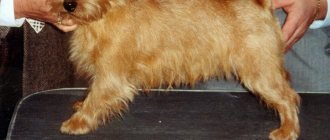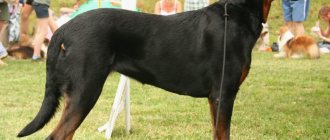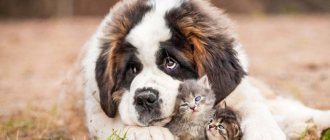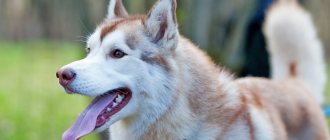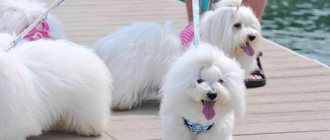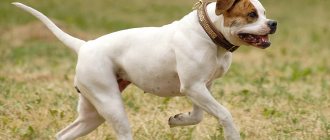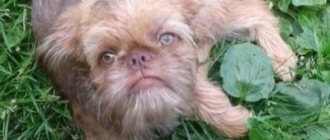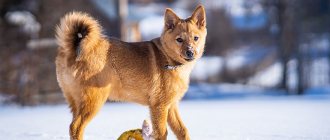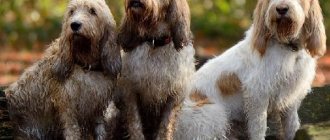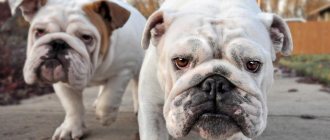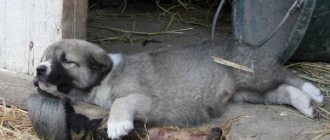Brief characteristics of the dog
- Other possible names: Skye Terrier, sky terrier.
- Adult height: 20-25 cm.
- Weight: 8-11 kg.
- Characteristic color: all shades of fawn and gray, black.
- Coat length: long, straight.
- Life expectancy: 12-15 years.
- Advantages of the breed: smart, cheerful, friendly, quick-witted, loyal.
- Difficulties of the breed: does not get along with children, requires grooming, can be aggressive.
- Average Price: Skye Terriers cost between $200 and $500, and sometimes more.
History of the origin of the breed
The Skye Terrier is one of the oldest dog breeds , and therefore the history of its origin is not reliably known. There is a version that they came to Britain back in the 1st century along with Roman legionnaires. Some claim that the homeland of these dogs is China. The most common version is that the Skye were brought to Britain by the Spaniards . The dogs were rescued from a sunken Spanish galleon off the coast of the Scottish Isle of Skye. It was this island that became the official homeland of the breed, which then spread throughout Britain.
According to historians, they were specially transported to hunt burrowing animals . In the 14th century, written descriptions of the breed appeared, and in the 16th century, the English scientist John Caius described the dogs in his work “On English Dogs.” By the time the Skye Terrier appeared, similar small Cairn Terriers already existed in England, which at one time were considered the ancestors of the breed. Although the two breeds differed in coat length and ears, they were grouped together.
Initially, the owners of Skye Terriers were exclusively aristocrats. One of the breeders of Skye Terriers in England is Queen Victoria , who took a great liking to Skyes during her visit to Scotland in 1842. This is how the breed began an active social life associated with visiting various exhibitions.
In 1872, a monument to the most faithful Skye terrier named Bobby was erected in Edinburgh. After the death of the owner, for 14 years he came to the cafe, where they often visited together.
In 1887, the breed received recognition from the AKC, and in 1904, the official division into Skye and Cairn Terriers took place. The FCI recognized Skye Terriers only in 1954. The breed standard was published in 1987.
Some of the most famous Skye Terrier owners are MacDonald, McLeod and McKinnon. And one of the Skye terriers belonged to Mary Stuart ; he died of a broken heart shortly after her execution.
The most common breed is considered to be in Great Britain and America.
Features of the breed and character of the Skye Terrier
The history of the Skye Terrier breed goes back to the distant sixteenth century. Legend has it that along with the sailors, their dogs also ended up on an island called Skye, which is located in Scotland.
Living there for some time, the dogs walked with each other, Spanish visitors, local terriers and spaniels, and that’s how the Skye terriers turned out.
As the years passed, the newly bred Skye Terriers were returned back to Foggy Albion. The Queen of England, seeing such beautiful dogs, was delighted with their unique appearance.
Thanks to this, Skye terriers became so popular among the local aristocracy. That in the mid-eight hundredths they even opened several nurseries for their breeding. In addition, these dogs were not bad hunters of animals living in holes.
As the years passed, breeders continued to support the breeding of this particular breed. And the fame of the Skye Terrier dog reached the Asian continent and America. Well, they came to Russia already in the early sixties of the last century.
In two thousandths, British dog breeders announced that the number of these dogs began to decrease significantly. And she called on the owners of Skye Terriers to be more active in their breeding. And indeed, over the years the number of Skye Terrier puppies began to increase.
The peculiarity of their breed is that these dogs are quite small in size, but very muscular. They are half the size of their body.
On the head there are small ears, densely covered with hair. Like two fountains, hanging on the sides. Nose, blackened shiny snout. And gorgeous thick bangs that fall over the eyes.
But despite this, they have excellent vision. And advice to novice dog breeders, information for the future, do not under any circumstances cut the bangs above the eyes of dogs of this breed.
Skye Terrier puppies are small and vulnerable, so do not have them in your home if your children are still very young. And they can unknowingly injure them.
You need to start taming puppies around other people and walking them in society as soon as possible. So that they can see from an early age that they are not alone in this world.
And in the future, such walks will help their correct, moral development. Already matured dogs will not be too modest or angry.
Another character trait that a person purchasing a dog of this breed needs to know about. They are very active, friendly, and cannot stand the absence of anyone near them.
Leaving them for a long time, alone with themselves, the animal can become disobedient and aggressive. And so that the dog can spend some time in an empty home while the owners are away.
It takes a long time to teach her this, starting from a few minutes. And every day the time must be increased.
If this hairy miracle has settled in your apartment, then remember that they do not accept proximity to other pets, in particular rodents.
Due to their character and genes, they will pursue the unfortunate little animal for a long time, and eventually destroy it. Skye terriers will also zealously protect their owner from strangers and animals.
Dogs living in country houses with free range are more active than those living in apartments. Of all the people who live in the same territory with him, he chooses only one.
And he considers him his master. Having chosen a person once and for all, he will be infinitely devoted to him until the end of his life. In Scotland, they even erected monuments to a Skye Terrier dog for its devotion to its owner, after his death. There are more than five of them.
His attitude towards children cannot be called evil, but not friendly either. Rather, he is patient in dealing with them, and it is better not to tease him.
In terms of energy, such a dog is suitable for a person who is purposeful, decisive, and fearless. Only then will the dog be amenable to training and education.
There is one more peculiarity of this fluffy creature: the outline of its face expresses a smile. Such dogs are smiley.
Purpose of the breed
The Skye Terrier was intended for hunting burrowing animals , such as fox, otter, badger and small rodents. Moreover, the small size allowed the dog to penetrate directly into their holes. Since the 19th century, the Skye has gradually turned into a decorative and show dog, as well as a pet.
Description of the nature of the breed
Skye Terriers in general can be called a very loyal, balanced dog . But they have a dual nature and a somewhat complex character . At home, these are absolutely calm, indifferent dogs, and sometimes even phlegmatic and distant. But as soon as they go outside, calmness gives way to energy, playfulness and curiosity.
All family members are treated with trust and devotion . With kindness and tenderness, they are ready to serve those they know well for many years. But you should not start a family with small children . Excessive noise and fuss will irritate the dog.
They are so suspicious and wary of strangers that they always remain on guard and are ready to rush at them if they sense danger. The Skye Terrier will almost never take anything from the hands of a stranger. Well aware of their importance, these dogs often show independence and show their superiority in every way, especially over other animals. Skye terriers are also incredibly jealous , both towards their owners and towards their belongings and territory.
Character
Over its long history, the breed has not lost its courage and passion. When the terrier is engaged in direct duties - hunting - he is distinguished by fury, ruthlessness, and the absence of any hesitation.
The character of Skye Terriers matches the first Scottish aristocrats. He does not tolerate any familiarity or baby talk. But he doesn’t allow himself any familiarity either. He does not tolerate importunity and pestering at all - the annoying person is shown a grin of strong white teeth.
In between times, he will not even communicate with the owner, hinting that if it is decided to pay attention, then it should be given in full. He won’t beg for attention himself – the pride of a poor Scottish aristocrat won’t allow it.
Never recognizes the superiority of the owner, will not obey. But he will respond to a sincere request with all the fervor, understanding it perfectly. Fulfilling the owner’s wishes, he will be proud of his own nobility and responsiveness.
He understands his place in the house and in the hierarchy correctly, and will not get in the way. In communication he behaves with restraint, betraying emotions only with a barely noticeable movement of his tail. He tries not to communicate with strangers and not to trust. Feels the mood and intentions of people, contrasting them with his vision of universal justice.
Of the qualities of Skye Terriers, one thing needs to be highlighted separately - unconditional loyalty. A real case, replicated by the Walt Disney film studio, happened to Bobby, whose owner died. The devoted pet lived on the owner's tombstone for 14 years. There was not a single person in Edinburgh who could offend the dog. Everyone knew and loved him. At the mayor's direction, Bobby was put on a collar with a certificate of protection against dog catchers. The faithful Skye died at a very old age, and Edinburgh residents raised money to install a monument - a fountain with the words: “To Bobby the Skye Terrier - the most faithful dog in the world.” After hearing this story, Disney made a movie that brought tears to audiences around the world.
A compact dog does not require a large, spacious room; a small apartment is enough for him, but he will also not refuse a house with a fenced area. Active walks every day are necessary for a baby bursting with energy.
The eccentric nature and extraordinary appearance invariably attract the attention of passers-by, and its undemanding nature and true devotion make the Skye an amazing friend and companion.
We advise you to read: Entlebucher Sennenhund Dog Breed
How to choose a puppy
A Skye Terrier puppy can easily be confused with a Cairn Terrier. To prevent this from happening, you should pay attention to the erect ears of the Skye and the long coat . As for color, a light-colored puppy will only take on its final color by the age of one and a half years. Regardless of color, the Skye Terrier will have a black nose and ears .
The head is wedge-shaped with regularly spaced, medium-sized round eyes. The slightly elongated body always ends in a hanging tail. A wide chest and strong, muscular legs create the feeling of a strong puppy. The coat should shine and be pleasant to the touch.
It is better to adopt a puppy no earlier than he is six to eight weeks old . And be sure to ask the breeder about possible hereditary health problems. And also check the presence of vaccination marks in the veterinary passport. If you are purchasing a puppy for further breeding or participation in exhibitions, then carefully study the puppy passport. It must not contain any disqualifying marks.
Vaccinations and susceptibility to disease
Skye terrier puppies are first vaccinated at 8–9 weeks with a complex vaccine against:
- carnivore plague;
- parvovirus enteritis;
- infectious hepatitis;
- leptospirosis;
- parainfluenza.
After 3 weeks, the puppies are revaccinated. At six months, when the change of teeth ends, dogs are vaccinated against rabies. At one year, puppies are again given a comprehensive vaccine. Adult animals are vaccinated every 12 months.
The Skye Terrier is a healthy breed whose representatives very rarely get sick. Among the congenital pathologies in these dogs are:
- displacement of intervertebral discs;
- joint diseases.
Other health problems arise due to improper care. In good conditions, Skye Terriers live 14–16 years.
Dog names
Choosing a nickname is always a responsible task that the whole family puzzles over. You always want to choose a rare, non-repetitive name for your pet that can be easily pronounced and remembered. For those who purchase a puppy with already completed documents, this problem disappears by itself, since it already has a registered name. For those who have yet to choose a nickname, below are several suitable options:
- for males - Bosik, Wilson, Damster, Limus, Briney, Darius and so on;
- for bitches - Bexy, Limba, Cora, Miriam, Katie, Agnes and similar names.
Care and maintenance
Despite the luxurious coat, caring for the Skye Terrier does not create much trouble . The dog needs to be brushed every day . This activity is usually a pleasure for owners. Moreover, the wool does not tangle and does not form unsightly clumps. For this reason, the Skye Terrier does not require grooming , unlike other long-haired breeds.
You can bathe your dog once a month , and if necessary, more often, but always use a special shampoo that does not dry out the skin. You should regularly trim the hair between the toe pads and take measures to combat fleas, which, with any care, can get into the dog’s fur. You also need to clean your pet’s ears and give medications to prevent or get rid of worms.
Skye Terriers are pampered indoor dogs . Therefore, a comfortably furnished corner is suitable for them. Often dogs themselves choose their favorite place , which turns out to be an easy chair or part of the sofa.
Due to its small size, the Skye can be easily trained to go to the toilet in a diaper or in a litter tray. But this does not eliminate daily walks in the fresh air, which are useful not only for the dog, but also for its owner.
Possible health problems
The Skye Terrier has good health , and individuals who have reached 14-16 years of age are often found. Among the possible diseases that occur in this breed, it is worth noting hereditary problems with the spine, namely: displacement of the vertebral discs . There are also problems with the digestive system.
Dogs suffer from ulcerative colitis, which can be caused by worms, eating large amounts of grass, or ingesting foreign objects. Skye terriers can suffer from various dermatitis due to improper grooming or allergies.
Pros and cons of the breed
The Skye dog is quite specific, and before purchasing one, you need to know what advantages and disadvantages the breed has.
The advantages of keeping such a pet:
- attractive, extraordinary appearance;
- modest size, thanks to which the animal feels comfortable when kept in an apartment;
- incredible devotion to the owner;
- distrust of strangers;
- lack of odor from wool;
- tolerance of loneliness, your pet can be left alone for a long time, it will not be sad.
The disadvantages of the breed include the following:
- self-sufficiency, which is why each representative of the breed requires an individual approach;
- the need for regular physical activity;
- careful grooming;
- display of intolerance towards other dogs.
The disadvantage of the breed is that it is small in number, and therefore it is quite difficult to acquire a pet.
Nutrition for puppy and adult dog
The best and properly balanced type of food for the Skye Terrier is considered high-quality ready-made dry or canned food . Cheaper foods can, on the contrary, harm the dog.
If you are a follower of proper or dietary nutrition, then you can feed your dog the same thing that you cook for yourself . Strict exceptions from the Sky diet, which is already prone to allergies, are smoked foods, products with preservatives and dyes, sweets, especially chocolate, and yeast baked goods.
In the first days after the puppy arrives in the house, it is advisable to strictly follow the breeder’s recommendations and not change the diet suddenly. This is done over several days. Feed the puppy four to five times a day at regular intervals. As the dog grows older, the dog is gradually transferred to two or three meals a day .
When using industrial feeds, it is necessary to strictly follow the manufacturer's recommendations, and when feeding them naturally, control portion sizes to avoid overfeeding.
What to feed?
Please note that the Skye terrier must be fed from a stand, which must be raised as the animal grows - this will allow the animal to develop the correct posture. Young dogs are fed often, but in small portions, and care must be taken to ensure that the pet’s belly does not swell from the food, and that the baby himself, even after eating, remains inclined to play
Until the puppy reaches 2 months of age, he is fed 5-6 times a day, then the number of feedings is gradually reduced, so that by six months the pet is switched to 2 meals a day. Usually in the morning they give lighter food - for example, kefir with crackers, cottage cheese or cereals, and for dinner they offer dog mash consisting of meat, vegetables, cereals, eggs and herbs
Young dogs are fed often, but in small portions, and care must be taken to ensure that the pet’s belly does not swell from the food, and that the baby himself, even after eating, retains a tendency to play. Until the puppy reaches 2 months of age, he is fed 5-6 times a day, then the number of feedings is gradually reduced, so that by six months the pet is switched to 2 meals a day. Usually in the morning they give lighter food - for example, kefir with crackers, cottage cheese or cereals, and for dinner they offer dog mash, consisting of meat, vegetables, cereals, eggs and herbs.
The meat should be lean - beef, veal, rabbit or horse meat; high-quality offal (liver, heart, jellied chicken feet) is allowed a couple of times a week. Meat products can be given raw, but if you cannot be 100% sure of their freshness, then it is better to first boil or stew them. Fatty lamb and pork should not be included in the menu - this will have the most adverse effect on the dog’s stomach and pancreas.
Please note that minced meat is usually poorly digestible by puppies, so it is advisable to give meat products finely chopped
Meat should make up about 70% of your dog's diet, with the remaining 30% coming from other foods.
- Fish. Preference should be given to low-fat varieties - hake or cod. River fish should not be given; it contains small bones and is often affected by helminths.
- Eggs. It is allowed to include 1-2 chicken egg yolks per week or one quail egg per day in the diet.
- Dairy products. Milk itself can only be given to puppies up to two months, then it ceases to be absorbed by the animal’s body. After this age, preference should be given to low-fat cottage cheese, kefir or yogurt.
- Porridge. Skyterriers are usually given rolled oats, as well as boiled buckwheat or rice; corn grits and wheat are poorly digestible in the dog’s stomach, and pearl barley is not digested at all.
- Vegetables are very important for the full growth and development of the dog; it is best to offer Skye grated carrots, as well as cabbage and always fresh herbs (parsley, dill or celery).
- If the dog has a good attitude towards fruits, then you need to include them in the dog’s menu if desired.
- It would be useful to add a little vegetable oil to the mash - it improves the condition of the animal's coat.
- Do not damage the seaweed, which is rich in B vitamins - the product helps strengthen the immune system, enhances the growth and shine of the coat.
If you are going to feed your pet dry food, then you should give preference to premium, super-premium or holistic products - they are made from the highest quality meat, contain a balanced composition and are enriched with all the necessary vitamins and minerals. Food from the economy category has a high content of preservatives, flavor enhancers and flavorings.
It is also better to exclude too thin soups; dogs do not accept fatty, flour products, sweets of all types, marinades and pickles.
The daily diet of a dog up to 6 months should be approximately 1/25 of the animal’s body weight, after 6 months – 1/20.
Training
Early socialization is very important for the Skye Terrier . Without it, the dog will become like a renounced snob and will be suspicious of everyone and everything. You should also be involved in raising your pet and teaching it behavioral norms from the first days.
As for training, the Skye Terrier is capable of not only learning all the necessary commands, but also learning various tricks and the basics of some types of dog sports .
The dog's independent character requires patience and firmness . Please note that classes should not be too long, as this can quickly get boring for your pet.
Education and training
The difficulty in raising a pet lies in its quarrelsome, disobedient character. The animal begins to behave especially boldly if, from the very beginning, the owner gives in and the dog begins to feel its superiority and the ability to manipulate the person. You need to be moderately strict with your pet, always show who is in charge, but also not forget about rewarding for good behavior.
The dog is distinguished by its sharp mind and high intelligence. If you manage to establish a partnership and friendly relationship with her, she will please the owner with quick learning of commands and good behavior.
Additional Information! When training a dog, it must always be kept on a leash. This will help the animal concentrate better on learning without being distracted by surrounding dogs, birds and other irritants.
Advantages and disadvantages
Among the advantages of the Skye Terrier, one can first of all highlight their devotion and affection for their owner . Of all family members, they tend to choose only one to whom they will be infinitely loyal. Others will simply be treated with respect. And if a stranger appears near the door of the house, then Skye will immediately notify about this, and while he is in the house, the dog will treat him with great suspicion.
Skye terriers are balanced and calm . But they have their drawbacks. They do not tolerate fuss and noise, so they are not suitable for those who have small children . You should not get a Skye if there are other animals living in the house.
The Skye Terrier needs regular walks and grooming . It also requires early socialization and good upbringing, otherwise the dog can easily take the lead, and then you will live by his rules.
Price and reviews of the Skye Terrier
to buy a Skye Terrier from a kennel that breeds them. There you will definitely be sure that the dog is vaccinated and not exposed to genetic diseases.
Plus, professionals will always be able to advise on how to properly care for them. The price for a Skye Terrier from a kennel varies from two hundred and fifty dollars and above.
Also, do not forget about the breeders of these dogs. At home, they create the best possible climate for their development, and they will also be happy to teach them how to make friends with the dog.
Reviews about them are the best. Very, very loyal and devoted dogs. Having chosen and fallen in love with its owner, it will be with him to the end.
Owner reviews
Christina:
I also have such a heavenly handsome man. Adorable dog. She has one difference from other breeds. Skye knows her worth very well and often behaves like a proud and independent aristocrat.
Victoria:
My husband gave me this sweet creature with the words: “Why are you worse than the queen?” I am simply delighted with such a gift. I really enjoy brushing his nice fur. We know absolutely all the teams, we know how to dance on our hind legs and take part in agility competitions. I’m generally silent about exhibitions. It feels like the dog was specially created for the podium: a proud look, graceful movements and intelligent behavior. Well, a real gentleman-aristocrat. And this fringe on the ears just drives me crazy. We don’t have children yet, and we give all our love to our boy, and he, without stinting, returns everything to us.
Angelina:
This is a real female companion. Sky and I are almost always together. He loves to ride in the car. Moreover, he gets angry if they occupy his front seat. And how faithful and obedient he is cannot be expressed in words. To describe the breed in a nutshell, it is completely worthy of the queen’s attention.
Are you also lucky enough to become the owner of a heavenly angel called a Skye Terrier? Then share with us your impressions and observations regarding this breed.
Share
Leave a review
Description of the Skye Terrier breed (standard requirement)
Looking at the photo of Skye terriers we see all their beauty of non-standardity. This is necessary, the body length is three times the height of the dog. With a height of 30 centimeters, the length of the entire dog is more than a meter, from the tip of the nose to the edge of the tail.
And gorgeous wool hanging all the way to the floor. It consists of lower soft, not long fur and a main coat. Since the wool is rough, it does not tangle into lumps or curl at the ends. But it grows to the required, standard length only by the time the dog is two years old.
According to the standard, the animal is quite low, with short legs and a strong body. They are not small in size and have a well-shaped head. Very noticeable nose.
Their ears can be erect or droop slightly. But the former are more suitable according to the breed standard. Noticeably long, cervical transition, from head to body.
Their dorsal part is quite flat and their chest is well developed. The forelimbs are noticeably stronger and larger than the hind legs. Their tail is not very long, but always straight. And it never rises above the level of the back.
Their standard color can be white or black. Light golden, ash, only one color. With darkening on the ears and limbs.
Also, the nose and face are always darker. And an acceptable light spot on the chest. The presence of any other spots in the color is considered a defect in the breed.
